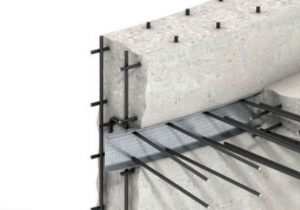EXPOSED REBAR
Concrete with Exposed Rebar Rectification

But whether it is a reason for worry or not depends on the nature of the problem. But whichever is the case, we at Structural Builders in Liverpool can rectify any type of exposed rebar back to its original state.
Risks of Exposure
Generally, exposed rebar manifests due to deterioration within the concrete or construction defects — with the latter being the most common.
Deterioration within the concrete occurs when the rebar starts to produce by-products due to corrosion, which is why it’s important to coat all rebars with corrosion-resistance coating. These by-products take up new spaces inside the concrete until there are no spaces left. At this point, corrosion by-products will start to put stress on the concrete until it cracks and exposes the rebars. Construction defects on the other hand are poor workmanship during concreting.
Regardless, knowing whether it has some sort of negative effect on the structural integrity of the structure needs to be investigated.
Our team of experts at Structural Builders in Liverpool specifically look for exposed rebars located at compression zones, i.e. at the ends of girders and slab, as well as column bottoms. Because concrete are normally designed to resist compression forces, missing concrete at such critical locations will automatically weaken the structure.
Furthermore, exposed rebars definitely have an accelerated risk of corrosion that can even affect sound rebars. If left untreated, a whole section of concrete will have corroded rebars in due time. Which is why action should be made at the onset of it.
How to Rectify?
Rectifying exposed rebar is pretty straightforward, all that needs to be done is to make the rebars corrosion-resistant then patch up the missing concrete. In this section, we’ll show you how we rectify exposed rebars.
Step 1: Mark a delimitation area around the damaged concrete, usually with an offset of 25 mm from the unsound concrete.
- This delimitation area should be marked clearly and precisely.
Step 2: Using a jackhammer or chipping gun, chip-off loose and weak concrete within the delimitation area.
- If in any case that all unsound concrete is removed without exposing the whole rebar diameter, it’s not necessary to chip away additional concrete to expose its whole diameter provided that it hasn’t corroded severely.
- If unsound concrete is removed, having been with severely corroded rebars (lost a quarter of its diameter due to corrosion), a full concrete removal until a clear space behind the rebar is created.
Step 3: Clean the exposed rebars and concrete substrate using wire brush or by sandblasting.
- Cut the existing rebars if it is severely corroded. They have to be replaced with a new one.
Step 4: Replace old rebars by splicing a new one.
- Splicing should be done by welding with a minimum splice length of 200 mm.
Step 5: Apply corrosion-resistance coating to the new rebars.
Step 6: Patching up (skip steps 4 & 5 if existing rebars hasn’t corroded severely).
- For thickness up to 100 mm, use a high-quality and ready to use non-shrink repair mortar.
- For thickness more than 100 mm, use a high-quality and ready to use non-shrink grout.
Step 7: Finish the newly-applied patching material using stainless steel trowel.
Do you have exposure in your property?
If you do, let us have the pleasure of helping you out by restoring your property to their sound, original state. We are a structural repair service provider based in Liverpool for many years now. We can deal with any structural defects imaginable.
Feel free to contact us for quotations. Save yourself the hassle and let us take care of your structural problems instead of you. Your time is far more precious spent on mundane tasks such as this. It’s that easy!
